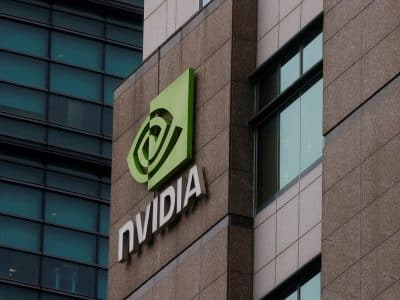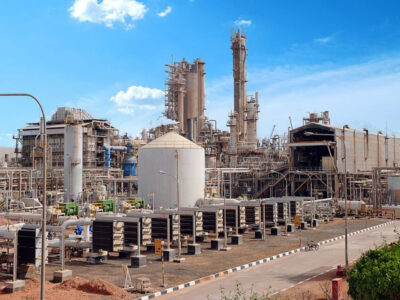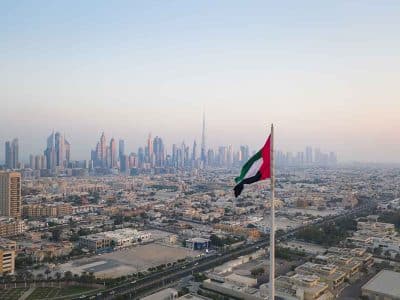Petrochemicals helped Saudi Arabia’s index TASI
edge up to a new seven-month high, although volumes slumped with
investors cautious as the fourth-quarter results season nears.
Saudi Kayan rose 0.8 percent and Yanbu National
Petrochemical Co’s (Yansab) added 0.6 percent.
Saudi Basic Industries Corp (SABIC) rose 0.2
percent after it recommended a SR2per share dividend for
the second half of 2010.
“SABIC’s dividend was in line with expectations, which is
shown in the share price reaction today,” said a Riyadh-based
trader who asked not to be identified.
The index climbed 0.3 percent to 6,595 points, its highest
finish since May 12.
Volumes slipped to a two-week low.
“We are at a cross roads, waiting to see if the Q4 numbers
will show that the gains in petrochemicals stocks are
justified,” added the trader.
“With results only a couple of weeks away, people aren’t
going to pump big money into the market.”
The petrochemicals index rose 0.3 percent, taking
its year-to-date gains to 21 percent.
Saudi firms are usually the first in the Middle East to
announce quarterly earnings, with results season expected to
start in early January.
Volumes slump to a 16-week low as Dubai’s index
DFM ended lower for a seventh session in nine and further
declines were forecast.
“In the absence of local institutions, day traders are
running the show and they are looking at the technical charts to
make a quick gain and that isn’t very useful to the market and
that’s why it’s moving sideways to lower,” said Mohammed Yasin,
CAPM Investment chief investment officer.
Emaar Properties fell 1.1 percent, Aramex
dropped 2.4 percent and Tabreed slipped 2.3
percent.
The index fell 0.5 percent to 1,632 points as volumes slumped
to their lowest level since Sept. 1.
“Volumes are worrying – local institutions are not active,”
said Yasin. “We could yet see a rally in the final two or three
sessions of the year, but if selling continues in the meantime,
investors will be trying to take the market up from a lower
base.”
Abu Dhabi’s index ADI fell 0.2 percent to 2,716 points.
Qatar’s index QSI made its largest decline
for four weeks as slumping trading volumes suggest a World Cup
rally is over.
Qatar Telecom dropped 1.6 percent, Barwa Real Estate
fell 2.6 percent and Qatar Gas Transport Co (Nakilat) dipped 2.9 percent.
The index fell 1.2 percent to 8,631 points, its biggest
decline since November 23 as losers outnumber gainers 18 to one.
The benchmark was up 5.5 percent since Qatar was chosen to
host the 2022 soccer World Cup. Less than 8.4 million shares
traded, the lowest total since the December 2 FIFA vote.
“The market is moving sideways,” said Hani Girgis, assistant
chief dealer at Dlala brokerage.
He said the index has two possible fates before the
year-end; breaking 9,000 points or slipping back to 8,500
points, with market liquidity likely to determine direction.
“Volumes in the past week have been very weak and we need
more liquidity to break higher,” Girgis added.
Kuwait’s Kharafi-linked stocks tumbled as
investors fret the group’s consortium will not complete its deal
to sell a 46-percent stake in telecoms operator Zain.
Kharafi, a major Zain shareholder, has a provisional deal to
sell the Zain stake to Abu Dhabi’s Etisalat, but there
is increasing market talk that Kharafi has not been able to
recruit enough Zain investors to reach the agreed 46 percent.
The deal also requires Zain to sell its stake in Saudi
affiliate Zain Saudi. No formal bids have yet been
revealed.
Etisalat has said any deal could fail if definitive
documents are not signed by January 15, 2011.
“Everybody is nervous about the Zain deal — as time goes
on, the picture gets bleaker as we wait confirmation that
Kharafi has the 46 percent and Zain Saudi has been sold,” says a
Kuwait trader who asked not to be identified.
“Kharafi stocks fell today and dragged the rest of the
market down as well.”
Zain ended unchanged, but National Investments Co dropped 5 percent and National Industries Group fell 4.2 percent. The latter pair are majority-owned by Kharafi.
Kuwait’s index KWSE fell 0.7 percent to 6,798 points.
Zain Saudi fell .3 percent.
Most Oman bluechips fell as fears over declines
in Asian markets spurred local retail investors to sell, but buying
in Renaissance Services and Oman Telecommunications Co (Omantel) enabled the country’s index MSI to end higher.
Bank Muscat dropped 1 percent and Bank Dhofar
fell 1.3 percent.
Renaissance Services rose 2.5 percent after it
bought Abu Dhabi-based Al Wasita Emirates for Services and
Catering in a AED56m ($15.25m) deal to expand
its contract services operations in the UAE.
Omantel climbed 0.2 percent and rival telecoms operator
Nawras ended flat.
“There was selling towards the end of the session, with some
traders liquidating positions on fears over declines in Asian
markets,” said Adel Nasr, United Securities brokerage manager.
“Banks were under pressure, but there was institutional
buying on Omantel, Renaissance and Nawras.”







